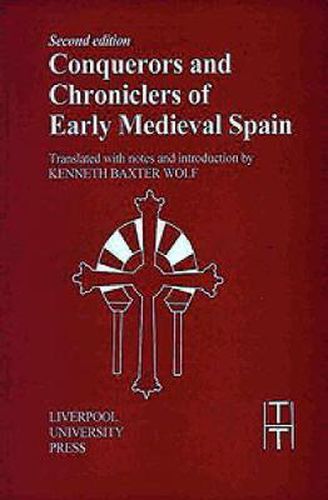Readings Newsletter
Become a Readings Member to make your shopping experience even easier.
Sign in or sign up for free!
You’re not far away from qualifying for FREE standard shipping within Australia
You’ve qualified for FREE standard shipping within Australia
The cart is loading…






From the perspective of the Hispano-Romans, the Visigoths who invaded Spain in the mid-5th century were heretical barbarians. But Leovigild’s military success and Reccared’s conversion to Catholic Christianity led to more positive assessments of the Gothic role in Iberian history. John of Biclaro (circa 590) and Isodore of Seville (circa 625) wrote histories that projected the Gothic achievements back to their uncertain beginnings, transforming them from antagonists of the Roman Empire to protagonists of a new, independent Christianity in Spain. The Muslim occupation of Spain in the early-8th century also prompted Christian historians to think creatively about the role of the invaders in the history of Spain. The fact that they did not, like their Gothic predecessors, convert to the religion of the peoples they conquered made it very difficult for the Latin historians to present them as the heroes of their chronicles. Nevertheless, the anonymous authors of the Mozarabic Chronicle of 754 and the 9th-century Chronicle of Alfonso III modelled their efforts on those of Isodore and John of Biclaro, adopting and adapting their techniques for making sense of the conquest of a Christian territory by heterodox foreigners. Extensively revised, and with additional material, this volume contains translations of the four texts, together with essays about them.
$9.00 standard shipping within Australia
FREE standard shipping within Australia for orders over $100.00
Express & International shipping calculated at checkout
From the perspective of the Hispano-Romans, the Visigoths who invaded Spain in the mid-5th century were heretical barbarians. But Leovigild’s military success and Reccared’s conversion to Catholic Christianity led to more positive assessments of the Gothic role in Iberian history. John of Biclaro (circa 590) and Isodore of Seville (circa 625) wrote histories that projected the Gothic achievements back to their uncertain beginnings, transforming them from antagonists of the Roman Empire to protagonists of a new, independent Christianity in Spain. The Muslim occupation of Spain in the early-8th century also prompted Christian historians to think creatively about the role of the invaders in the history of Spain. The fact that they did not, like their Gothic predecessors, convert to the religion of the peoples they conquered made it very difficult for the Latin historians to present them as the heroes of their chronicles. Nevertheless, the anonymous authors of the Mozarabic Chronicle of 754 and the 9th-century Chronicle of Alfonso III modelled their efforts on those of Isodore and John of Biclaro, adopting and adapting their techniques for making sense of the conquest of a Christian territory by heterodox foreigners. Extensively revised, and with additional material, this volume contains translations of the four texts, together with essays about them.